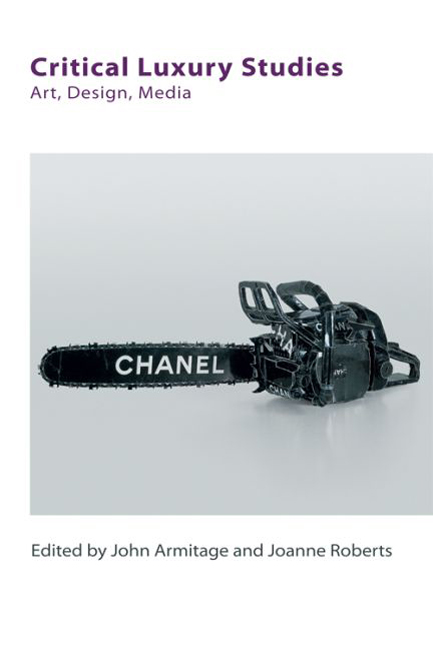Book contents
- Frontmatter
- Contents
- List of Figures
- List of Tables
- Series Editors’ Preface
- Acknowledgements
- Notes on Contributors
- 1 Critical Luxury Studies: Defining a Field
- I CRITICAL LUXURY STUDIES
- II ART, DESIGN, MEDIA
- 7 Experiments in Suchness: Hiroshi Sugimoto's Silk Shiki for Hermès
- 8 Libeskind in Las Vegas: Reflections on Architecture as a Luxury Commodity
- 9 Sartorial Connoisseurship, the T-Shirt and the Interrogation of Luxury
- 10 Online Luxury: Geographies of Production and Consumption and the Louis Vuitton Website
- Index
10 - Online Luxury: Geographies of Production and Consumption and the Louis Vuitton Website
from II - ART, DESIGN, MEDIA
Published online by Cambridge University Press: 23 September 2017
- Frontmatter
- Contents
- List of Figures
- List of Tables
- Series Editors’ Preface
- Acknowledgements
- Notes on Contributors
- 1 Critical Luxury Studies: Defining a Field
- I CRITICAL LUXURY STUDIES
- II ART, DESIGN, MEDIA
- 7 Experiments in Suchness: Hiroshi Sugimoto's Silk Shiki for Hermès
- 8 Libeskind in Las Vegas: Reflections on Architecture as a Luxury Commodity
- 9 Sartorial Connoisseurship, the T-Shirt and the Interrogation of Luxury
- 10 Online Luxury: Geographies of Production and Consumption and the Louis Vuitton Website
- Index
Summary
In their study of online action, Steven Schneider and Kirsten Foot develop the notion of a ‘web sphere’, that is, ‘a set of dynamically defined digital resources spanning multiple web sites deemed relevant or related to a central event, concept or theme, and often connected by hyperlinks’ (2005: 158). The web now abounds with sites devoted to luxury fashion, forming what can be called, drawing on Schneider and Foot, the luxury web sphere. The present chapter is devoted to one of its iterations, the Louis Vuitton website, and interrogates the ways a luxury brand produces, and reproduces, online the logics of distinction and social differentiation that underpin luxury (Bourdieu 1984; Lipovetsky 2003; Michaud 2013). It looks at how exclusivity is built into a site, and, in the process, identifies the actors who are included in, as well as those excluded from, luxury as defined by Louis Vuitton.
In the first section, I situate the brand in the context of the luxury fashion industry. I then discuss the notion of websites as hypertexts to engage with the issue of the problems that might arise from researching such texts, and to briefly reflect on my approach to the Vuitton website. In the second section, I focus on the idea of production, and in the third on consumption, for both discourses on production and consumption inform much of the website; the former by way of the various stories and histories of the making of Louis Vuitton goods that are narrated there, the latter by virtue of the site being largely devoted to the promoting and selling of goods. A commercial website is a ‘space of consumption’ (Currah 2003: 5). Interrogating such a space, I look at its social make-up to ask: who are its imagined consumers? Which also means: who are its absent ‘others’?
The Vuitton website, however, is also a space of production, both in the sense that it devotes many words and images to the topic of the production of Louis Vuitton goods, but also in the sense that this putting into discourse is itself an act of production, a ‘symbolic production’ (Bourdieu 1993a).
- Type
- Chapter
- Information
- Critical Luxury StudiesArt, Design, Media, pp. 199 - 220Publisher: Edinburgh University PressPrint publication year: 2016



